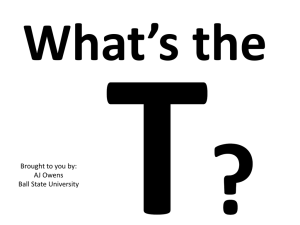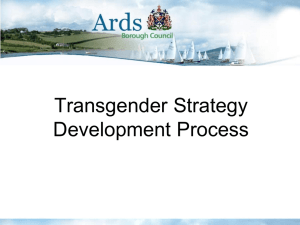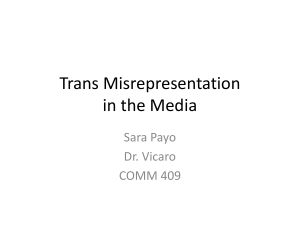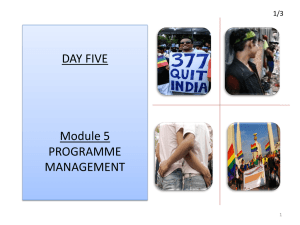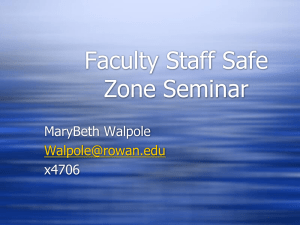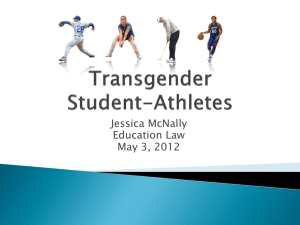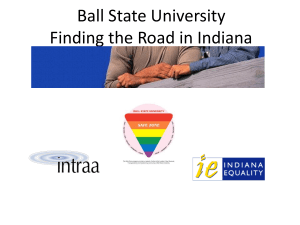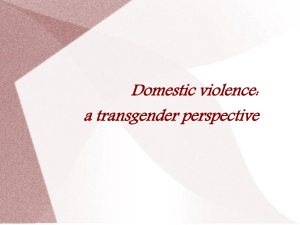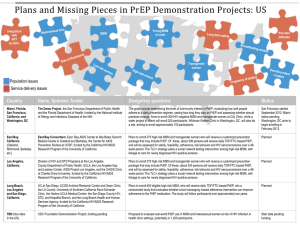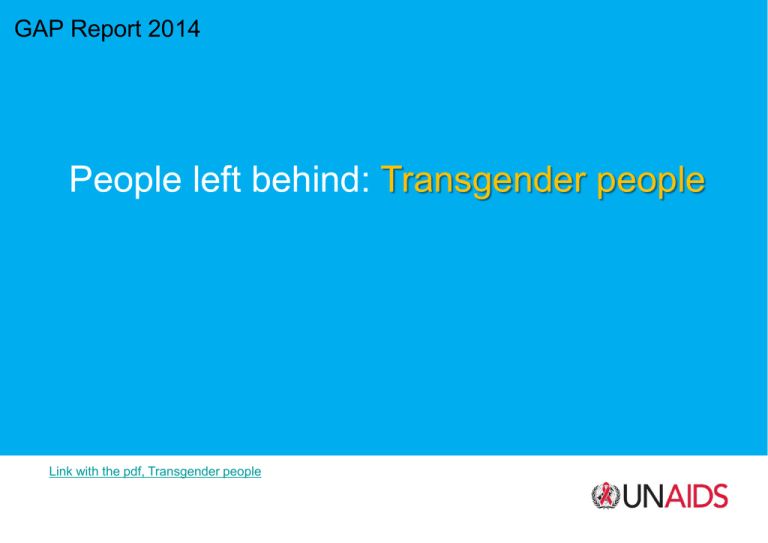
GAP Report 2014
People left behind: Transgender people
Link with the pdf, Transgender people
I am a transgender woman.
I face these issues.
HIV burden
• Transgender women are among the populations most heavily affected by HIV.
• Globally, an estimated 19% of transgender women are living with HIV.
• Globally, the chance of acquiring HIV is 49 times higher for transgender
women than all adults of reproductive age.
• Estimates suggest that the transgender population could be between 0.1%
and 1.1% of reproductive age adults.
• Country reports suggest that HIV prevalence for transgender sex workers is
on average nine times higher than for female sex workers and three times
higher than for male sex workers.
Source: UNAIDS
HIV prevalence among transgender women
in Latin America
Sources: Various (please see notes of this slide.)
Sex workers: HIV prevalence by gender, 2013
Source: Global AIDS Response Progress Reporting 2014.
Why transgender women and men are being left behind
• Many transgender people experience social exclusion and marginalization
because of the way in which they express their gender identity.
• A transgender person does not identify with the gender assigned at birth.
• Estimates from countries indicate that the transgender population could be
between 0.1% and 1.1% of reproductive age adults.
• Many transgender people lack legal recognition of their affirmed gender and
therefore are without identify papers that reflect who they are.
• Evidence suggests that, in some settings, a significant proportion of young
transgender women engage in selling sex. This is often a result of social
exclusion, economic vulnerability and difficulty in finding employment.
• Transgender people are vulnerable to arrest in those countries that criminalize
cross-dressing.
WHY TRANSGENDER WOMEN AND MEN
ARE BEING LEFT BEHIND
THE TOP 4 REASONS
01
Family rejection and violation of the right to education and
employment
02 Violence, criminalization and transphobia
03 Lack of recognition of gender identity
04 Discrimination in health systems
Family rejection towards transgender people
Thailand and the Philippines:
Mexico:
New York City:
• In Latin America, 44–70%
of transgender women
and girls have felt the
need to leave home or
were thrown out of their
homes.
Sources: Various (please see notes of this slide.)
Employment discrimination
Unemployed
Employed part time or full time
Unemployed
Problems at work due to being transgender
General population lived below the poverty threshold
Sources: Various (please see notes of this slide.)
Transgender people lived below the poverty threshold
Lost their jobs due to their gender identity or expression
Past experience of mistreatment, harassment,
or discrimination on the job including invasion of privacy
Discrimination at school
Transgender people also experience bullying and harassment at school, which, apart
from the physical and psychological effects, can undermine learning opportunities and
educational achievement, thus affecting their future employment prospects.
Violence, criminalization and transphobia
• Around the world, transgender people experience physical and sexual violence and
hate crimes.
• The full extent of the violence and hate crimes faced by transgender people is difficult
to gauge because it is thought to be underreported.
• An international community-based project to monitor killings of transgender and
gender variant people collected 1509 cases of reported killings in 61 countries from 1
January 2008 to 31 March 2014.
• Exposure to transphobia is a mental health risk for transgender people and can result
in increased levels of depression and suicidal thoughts.
• In the United States, 46% of transgender men and 41% of transgender women have
attempted suicide. Prevalence of suicide attempts was highest among those who are
younger.
• Among transgender women living with HIV in Mexico, 25.7% experienced suicidal
thoughts, compared to 16.1% of men living with HIV and 16.7% of women living with
HIV.
Killings of transgender and gender-variant people,
2008–2014
Region (number of countries reporting)
Adapted from: Transgender Europe. IDAHOT Press Release, May 1, 2014.
http://www.transrespect-transphobia.org/uploads/downloads/2014/TvT-PRIDAHOT2014-en.pd
Lack of recognition of gender identity
• Many transgender people lack legal recognition of their affirmed gender
and therefore are without identify papers that reflect who they are.
• Without official documents that recognize their gender identity, transgender
people can be denied access to basic rights, including the right to health,
education and social welfare, resulting in a detrimental effect on their
health and well-being.
• Gender identity is not a protected status in binding international human
rights instruments, so transgender people struggle to find a recognized
platform upon which to base their advocacy efforts.
• Several countries have a precondition for transgender people to be
sterilized before undergoing sex reassignment surgery and/or the legal
recognition of their gender identity. Sterilization has a profound impact on
bodily autonomy. Any form of coercion is a violation of basic rights.
Countries reporting that their national AIDS strategies
addressed transgender people (2014)
39% Countries reporting that their
national AIDS strategies addressed
transgender people (2014)
61% Strategic plans do not
include transgender people
Transgender people remain
severely underserved in the
response to HIV, with only 39% of
countries reporting in the National
Commitment and Policy
Instrument 2014 that their national
AIDS strategies address
transgender people.
Source: National Commitments and Policy Instrument (NCPI), global AIDS response and progress reporting, preliminary data as
of 14 May 2014. Geneva: Joint United Nations Programme on HIV/AIDS, 2014.
Discrimination in health systems
• In health-care settings, transgender people often face stigma and ill
treatment, including refusal of care, harassment, verbal abuse and violence.
• Despite evidence of heightened HIV vulnerabilities and risks, resulting in high
HIV prevalence among transgender people, the coverage of HIV prevention
programmes among transgender people remains poor across all regions.
• Stigma and discrimination in the health system alongside lack of knowledge
of transgender people’s health-related needs by health personnel deter
transgender people from using services.
• Transgender women and men are drastically underserved by current
treatment efforts and report lower rates of treatment adherence than other
groups.
HIV testing among transgender sex workers
Denominators ranges from n=70 in Honduras to n=3813 in Pakistan.
Source: Global AIDS response and progress reporting. Geneva, UNAIDS, 2014.
CLOSING THE GAP
HOW TO CLOSE THE GAP
01 Community leadership
02 Recognition of rights and freedom from violence
03 Quality health services and access to work
04 Better research

